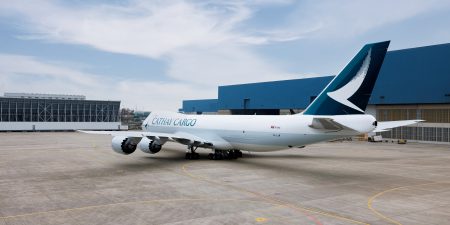‘The nature of air cargo has changed,’ says Calvin Hui, Head of Cargo Operations Hong Kong and the GBA. ‘Take for example the stringent temperature requirements of some of the vaccine shipments. Requirements are much more demanding these days. In the past, we used to focus on “flown as booked” and “delivered as promised”, but that is the just the basic of the basic.’
The present and future of airfreight, and how Cathay Cargo handles it, has been subject to consultation with customers and feedback from the wider industry. In essence, needs were identified for better communication, more shipment visibility and a higher quality, more consistent handling: especially as volumes of time- and temperature-sensitive shipments increase.
‘We listened to our customers,’ says Hui. ‘They told us operational reliability and customer service are top criteria in selecting an airline partner. They want to know the status of their shipment throughout its journey, and even more importantly they want to be kept informed in the event of any deviation to the plan.’
This combination of technology, transparency, communication and service has led Cathay Cargo to work not only on a refresh of its specialised air cargo solutions, but the introduction of next-generation track-and-trace through Ultra Track and the formation of the Operation Control Centre (OCC) to monitor and proactively manage shipments. ‘We want to give our customers peace of mind and to be available around the clock,’ he adds.
Hui is sitting in the COC (Cargo Operation Centre), which is the Cathay Cargo outpost in the Cathay Cargo Terminal. It is from here that the team, in Cathay Pacific uniforms, manages shipments going through Hong Kong: either as joining or as transit cargo, and oversees the outsourced work in the warehouse, such as build-up and acceptance. This is carried out by Cathay Pacific Services Ltd and its contractors who operate the terminal, with loading and unloading outsourced to another Cathay subsidiary, Hong Kong Airport Services Ltd (HAS).





